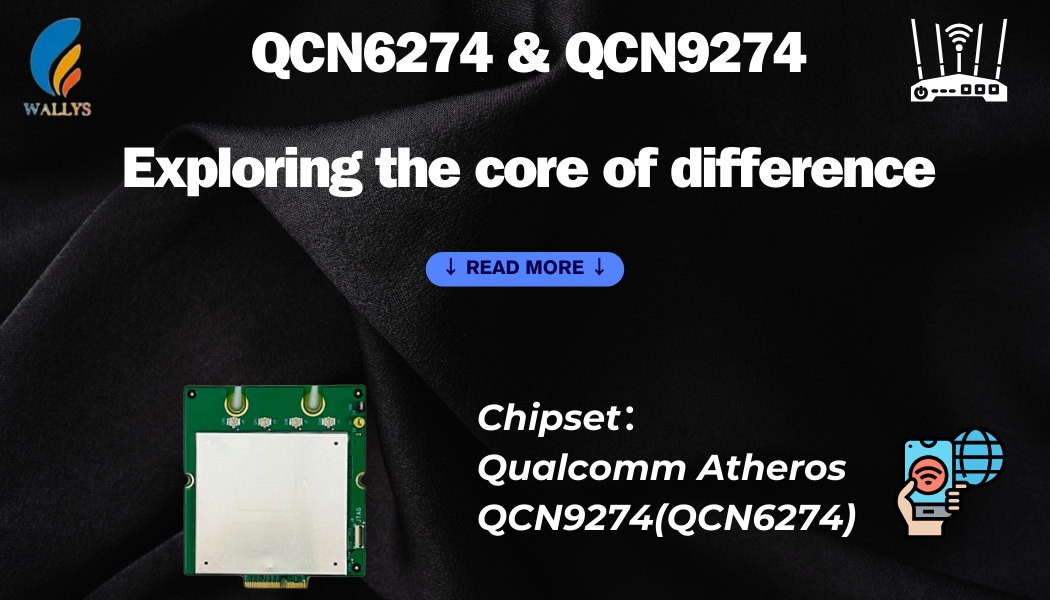QCN6274 and QCN9274: functional differences and application areas of wireless chips

In the field of wireless communications, QCN6274 and QCN9274 are chips that have attracted much attention. They have significant differences in supported wireless standards, functions and performance, and application scenarios. An in-depth comparison of these two chips not only helps to understand their advantages and characteristics in different application scenarios, but also factors such as market positioning, compatibility, security, cost and profit, ecosystem and support need to be considered
Supported wireless standards and capabilities
QCN6274 focuses on 4G LTE and 5G networks, providing high-speed data transmission and stable network connections, and is suitable for home and enterprise network connections. In contrast, QCN9274 supports the Wi-Fi 7 standard (802.11be), which brings faster speed, higher efficiency and more reliability to wireless network connections, and is more suitable for scenarios that require higher speed and more reliable network connections. , such as data centers and large enterprise networks.
The QCN9274 is a highly integrated Wi-Fi solution that integrates a baseband processor, RF transceiver and power management unit, connects to the host device through the PCIe interface, supports up to 4 spatial streams and 4 antennas, and provides a maximum of 11.5 Gbps throughput speed. In comparison, QCN6274 may be slightly inferior in terms of functionality and performance, but it is a processor focused on network processing and has a dedicated hardware acceleration engine to provide high-performance network processing capabilities for a variety of network protocols.
Application scenarios and market positioning
QCN6274 is suitable for home and enterprise network connections to meet basic wireless connection needs. The market positioning is mainly for the mid-to-low-end market. The QCN9274 is more suitable for application scenarios with higher demand for high-speed and stable wireless connections, such as data centers, large enterprise networks, etc. The market positioning is mainly for the high-end market.
Other key factors
In terms of compatibility, QCN6274 focuses on compatibility with existing equipment and is suitable for upgrading or replacing existing network equipment. In contrast, QCN9274 focuses more on innovation and forward-looking, supporting new wireless standards and technologies.
In terms of security, QCN9274 may have higher-level encryption and security protocol support, suitable for scenarios where sensitive data is processed.
In terms of cost and profit, QCN6274 may be more cost-effective and suitable for scenarios that have relatively low performance requirements but require large-scale deployment. As QCN9274 has higher performance and more complex functions, its manufacturing cost and selling price may be higher, but it also brings higher profits.
For developers, QCN9274 may have richer ecosystem support and documentation, simplifying the development process, while QCN6274 may be relatively basic in this regard, requiring more technical level and experience.
Taking these factors into consideration, developers and decision-makers need to choose the appropriate chip based on actual needs to achieve the best wireless connection performance and experience.
Now, the DR9274-DB is support two chipset QCN9274/QCN6274, you can choose which one you may need.

Features
■ Qualcomm Atheros QCN6274;
■ Qualcomm Atheros QCN9274 for Industrial Grade;
■ Maxim Tx power 20dBm per chain;
■ 2×2 2.4GHz MU-MIMO, up to 1376Mbps physical data rate;
■ 2×2 5GHz MU-MIMO, up to 5765Mbps physical data rate;
■ Support up to 4096-QAM;
■ M.2 connector;
■ PCI Express 3 .0 Interface
Applications
■ Commercial radio coverage
■ Forest fire protection engineering
■ Country coverage
■ Some special scene application
By:Wallystech











评论